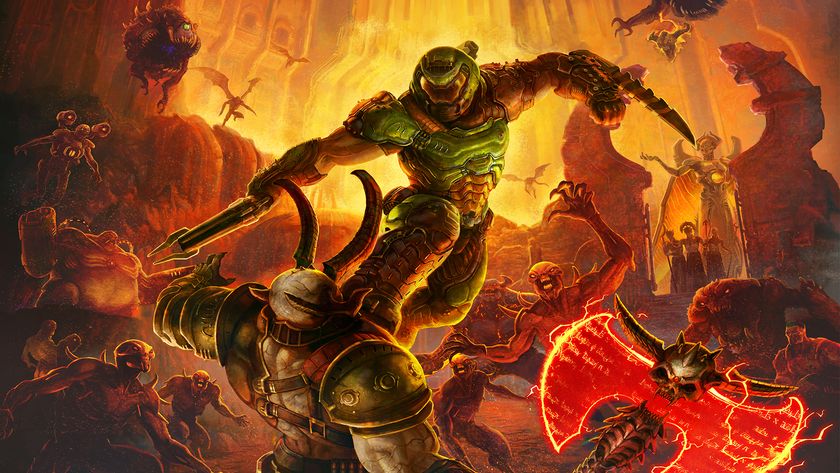The History of E3
Transcending history and the world, a tale of games and gamers, annually retold
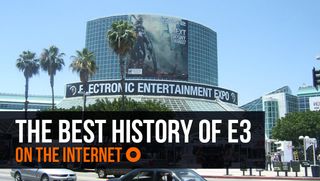
The games of the future, revealed to the world
The Academy Awards. The World Series. The NCAA Tournament. Every form of entertainment has a main event, the one time where millions of people are paying attention. For the gaming industry, talk of a "main event" can only mean one thing: It's E3 season.
The Super Bowl of Gaming is about to invade the Los Angeles Convention for the 19th time, ushering in industry bigwigs and gaming press from every corner of the world. We've already given you a comprehensive look at the E3 games we expect in 2013. Now, it's time for a history lesson. Before the doors to gaming Valhalla open once again, let's take a trip down memory lane and look back at the history of the Electronic Entertainment Expo, starting all the way back in 1995.
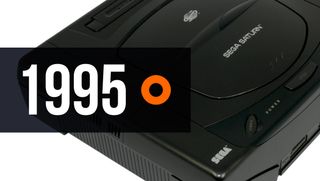
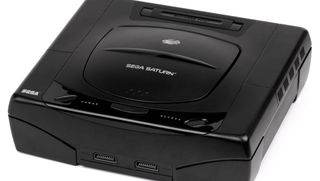
1995: It all begins
Almost 40,000 people attended the very first E3 at the LA Convention Center. The show's big news came from Sega, which announced the surprise early launch of its Saturn console--it made its way into some shops during the show. Sega boasted that it would have dozens of games ready for the system by Christmas.
This news was all the more juicy thanks to Nintendo revealing that it was delaying the release of its Ultra 64 (later to become Nintendo 64) until April '96, effectively giving its rival almost a year head start. Nintendo big cheese Howard Lincoln told GamesMaster magazine that the reason for the delay was "Nintendo's never-ending quest for better games".
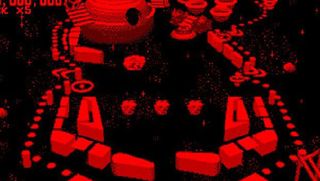
1995: Nintendo's biggest misstep
To cushion the blow, Nintendo unveiled a strong line-up of SNES titles, which included Doom, Killer Instinct, and Donkey Kong Country 2. It also stated that the European launch of Ultra 64 would be almost simultaneous with the US debut. As it turned out, the console eventually launched in the US in September '96 and didn't show up in Europe until six months later. Whoops.
The house of Mario was also busy pushing its ill-fated Virtual Boy system, calling it a "unique gameplay experience" and committing to spending $25 million to promote it. Nintendo claimed that over 100 third-party developers were working on games for it. Atari (the old one, that is) was also getting into the exciting world of futuristic virtual realities by showing off its own VR headset for the Jaguar console.
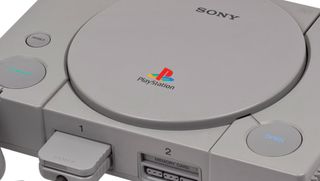
1995: We R Not (Red)E
With the launch of PlayStation just months away, Sony turned up to the show with a confident swagger ready to get people pumped about its little grey box. It announced that the console would launch for the Saturn-busting price of $299 ($100 less than its Sega rival) and that by Christmas there would be 50 titles available for the machine. To show off its new console, Sony rolled out games such as Ridge Racer, Tekken, Wipeout, and Warhawk. Attendees weren't unanimously convinced, however, that Sony would be able to cut the mustard against Sega and Nintendo. PlayStation's world domination followed soon after.
One strangely familiar game at the show was then-startup Insomniac Games' Ratchet & Bolt (you read that right) for Sega Genesis 32X, which boasted "the biggest videogame boss in known history" (apparently it was over 30 screens tall) and featured over 33 weapons. The game was eventually canned, which is a shame because it sounded pretty good.
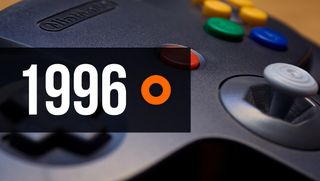
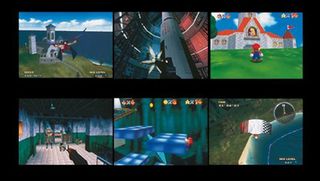
1996: Nintendo dominates with N64
After further delays, Nintendo's SNES successor still hadn't been released and E3's hordes were hungry to sample what N64 would have to offer. Hour-long queues had to be endured by anyone who wanted to try out the system formerly known as Ultra 64. Despite many show-goers struggling with the radical analog controller, games like Super Mario 64, GoldenEye, and Pilotwings 64 ensured that N64 was a genuine show-stopper.
Nintendo also revealed Game Boy Pocket, which was the first significant redesign of its all-powerful Game Boy since the handheld was released seven years earlier. And, in an effort to boost interest in its struggling Virtual Boy, Nintendo slashed the price of the console to $100. But even Nintendo couldn't save the doomed monochromatic curiosity and production ceased later in the year.
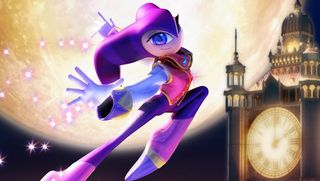
1996: The House of Sonic shows some cracks
After the release of PlayStation, Sony was fast emerging as a real force to be reckoned with and it played a strong hand at the show by cutting the price of its console to $200. Sega followed its competitor's lead and announced that gamers would be able to pick up a Saturn for the same amount, which was effectively half price compared to when the console launched the previous year.
Despite a good line-up of titles (including Virtua Fighter 2, Virtua Cop 2, and the still-held-in-high-regard NiGHTS), and the unveiling of its NetLink modem which would allow gamers to play Saturn online (for $200), the general murmur around the convention center was that Sega was beginning to wobble.
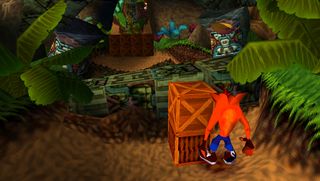
1996: Sony rides the wave of momentum
With Sega faltering and Nintendo's new console not even at the starting line, life in Sony-land was already looking rosy. New Ridge Racer, Tekken and Wipeout games were gratefully received, while totally fresh titles Soul Blade and Crash Bandicoot were grabbing considerable attention. After a brief appearance by the really-not-very-good Polygon Man at the previous E3, Sony also adopted Crash as its official PlayStation mascot.
With Sony soaring, Sega faltering, and Nintendo's next system on the horizon, the industry was incredibly unpredictable in the second year of E3. However, as we continue through the years, it's obvious that the winds of change have become a constant breeze for the gaming world.
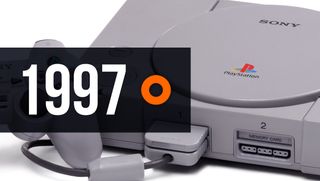
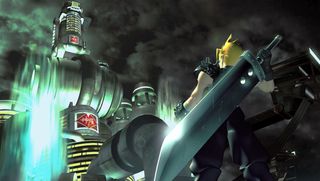
1997: The tide turns towards Sony
Held in Atlanta's Georgia World Congress Center and Georgia Dome, the third E3 not only marked a change of venue but also a power shift in terms of who dominated the show floor. While Nintendo had pretty much hogged the attention at the two previous events, the overwhelming number of PlayStation titles meant that Sony well and truly stole the show.
With no new hardware in the offing, it really was all about the games, and Sony's impressive lineup of console war-winning exclusives simply couldn't be avoided: real-life Lara Croft model, Rhona Mitra, was on display to pimp Tomb Raider II, Konami's Metal Gear Solid was voted game of the show despite only being present in the form of a 12 minute video, and Final Fantasy VII (then traditionally a Nintendo series) convinced many that Sony's box was the only choice.
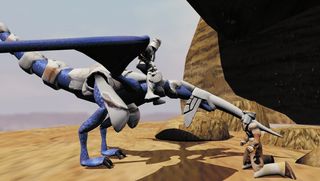
1997: Sega stands on shaky ground
Sega looked more fragile than ever and--besides Panzer Dragoon Saga and one playable level of the ultimately doomed Sonic X-Treme--had very little to counter the Sony assault. In the run-up to the show it announced further price cuts for Saturn. Sega also used the show to push its new line of PC titles, although many saw this new focus as an indication that the disappointing sales of Saturn were taking their toll.
The 1997 show should also be remembered as the first time Grand Theft Auto appeared, with attendees being proudly told that to drive from one side of the game's city to the other would take players around three minutes.
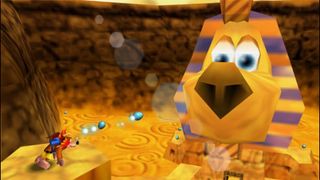
1997: Nintendo and a limited lineup
Nintendo's much talked-about 64DD expansion system was nowhere to be seen and the line-up of N64 titles looked positively skinny compared to PlayStation's glut of games. Though it's now owned by Microsoft, developer Rare then flew the Nintendo flag high with Banjo-Kazooie and Conker's Quest (which would eventually become Twelve Tales: Conker 64), while Nintendo's own Star Fox 64 demonstrated the vibrating delights of the N64 Rumble Pak.
Elsewhere, an up-and-coming PC "Quake-beater", Prey, also put in its E3 debut this year. The release date was, of course, up in the air.
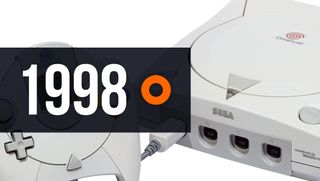
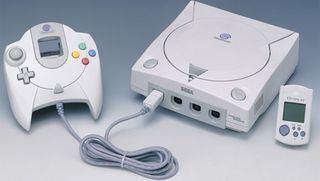
1998: Sega's "dream" of the future
Despite announcing the existence of its Saturn successor well ahead of the show, Sega was only showing its new Dreamcast console to select members of the press behind closed doors and at its pre-show press conference. However, anyone who saw the new 128-bit powerhouse in action was mighty impressed and predicted that Sega had a world-beating console on its hands.
However, with Saturn on its last legs and Dreamcast completely absent from the show floor, Sega had another tepid E3, which left Sony and Nintendo to go head-to-head.
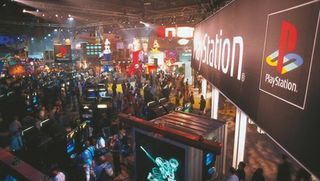
1998: Metal Gear Solid vs Ocarina of Time
The PlayStation maker's next big thing came in the shape of Spyro the Dragon, which it confidently touted as a Mario-beater and was heralded as one of the most polished titles at the show. Metal Gear Solid was the outstanding game of the show--again--and Mario creator Shigeru Miyamoto was even spotted taking time out from the Nintendo stand to play it.
The announcements of Syphon Filter and Silent Hill helped to bolster the appeal of PlayStation even more, but Nintendo had a few gems of its own on parade. The Legend of Zelda: Ocarina of Time, which was being talked up by Nintendo as "the biggest game release in history", wowed anyone that battled the congregated hordes hoping to play Miyamoto's masterpiece-in-the-making.
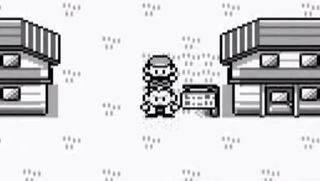
1998: The dawn of the Pocket Monster
Rare also had a triple N64 whammy that looked extremely tasty--Perfect Dark got an airing in video form, Jet Force Gemini was seen for the first time, and Conker's Quest resurfaced as Twelve Tales: Conker 64 (which would eventually be released in 2001 as Conker's Bad Fur Day). It was also a big E3 for Game Boy: not only did Nintendo lift the lid on Game Boy Color but it also showed off its monster collecting title, Pokemon. Despite creating a minor buzz at the show (largely because of the game's success in Japan), no one predicted the Pokemon phenomenon that would erupt when the game was released later in the year.
Other notable games that showed up at E3 '98 included PC titles Thief, Half-Life, and Duke Nukem Forever, which wouldn't see release until 2012. Interestingly, Duke Nukem Forever's publisher, GT Interactive, was the show's biggest exhibitor with 36 titles on show, including Oddworld 2, Unreal, and Prey. In comparison, current titan EA had half that number and its line-up featured World Cup '98, Sid Meier's Alpha Centauri, and Need for Speed 3: Hot Pursuit.
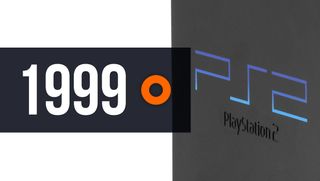
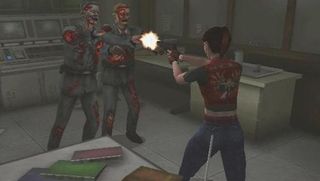
1999: Back in sunny LA
A seemingly permanent return to the LA Convention Center marked a big year for the big three. Sega launched a mammoth E3 assault and had an incredible 43 Dreamcast games on display, making its stand one of the most popular hangouts. Namco's Soul Calibur was arguably game of the show and was cleverly positioned near arcade versions of the fighter to show just how much better it looked on Sega's new machine.
Sega also showed off Dreamcast's online capabilities by hooking up four consoles running Sega Rally 2 using the machine's modem. And with games like Metropolis Street Racer, Shenmue, Power Stone, and Resident Evil: Code Veronica all turning heads, Sega fans felt confident that--when it was released later in the year--Dreamcast would be able to hold its own against the competition.
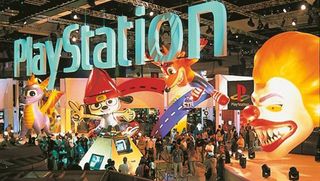
1999: Sony annonuces its sequel
Of course, by the time E3 rolled around, Sony had already announced its own new console: PlayStation 2. An eight-foot-high pyramid (that seemed to be clad in tin foil) at the front of Sony's stand was implanted with screens that showed PS2 tech demos and also offered a one-track playable glimpse of Gran Turismo. The super shiny cars impressed and the PS2 pyramid was constantly swarmed.
The presence of Sony's next-gen machine didn't distract too much from its still-strong PlayStation, however. Huge inflatable icons of Sony gaming--among them Crash Bandicoot, PaRappa, and Lara Croft--towered over pad handlers as they lapped up the opportunity to play Gran Turismo 2 (always preceded by stamina-sapping queues), Wipeout 3, Resident Evil 2, and Tony Hawk's Pro Skater.
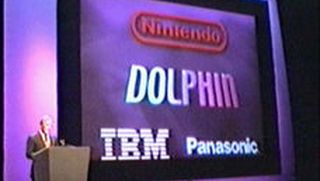
1999: Nintendo swims with a Dolphin
Nintendo used the show to announce its N64 successor, Dolphin (which would eventually become GameCube). There was nothing on Nintendo's stand, however, to prove that the fishy-titled machine actually existed. All that was offered was a 2000 release date, some PS2-beating specs, and an assurance from Nintendo boss Howard Lincoln that Nintendo was "absolutely confident that Dolphin will equal or exceed anything our friends at Sony can come up with for PlayStation 2."
Despite Dolphin-friendly gaming missing from its stand, Nintendo still had plenty to shout about. Revealed at the show, Donkey Kong 64 had its own mini-mountain replete with mine carts, and Pokemon was designated a huge area complete with a Pikachu-styled VW Beetle stuffed with plush Pikachus.
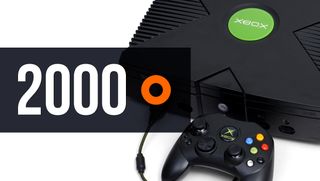
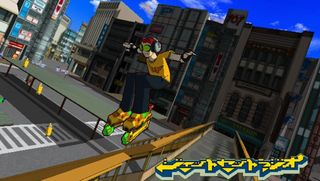
2000: Big, green and mean
The first show in the new millennium saw a new console contender put in its first E3 appearance. Yup, Microsoft gave the masses its first look at Xbox, although all it had to show were behind-closed-doors demos and nothing in the way of games. Needless to say, it didn't manage to steal many gazes away from the show's regular players.
Without doubt, this E3 belonged to Sega. Dreamcast may already have been dead in Japan and on life support in the UK, but the US was still hot for the box with the swirl and Sega's machine boasted some of the most impressive games. Being shown alongside Sega's new online service, SegaNet, were such titles as Jet Grind Radio, Samba de Amigo, Space Channel 5, Half-Life, Skies of Arcadia, Quake III Arena (Metropolis Street Racer and Shenmue were also still kicking about), all of which delighted the crowds and offered some hope that it wasn't game over for the console just yet.
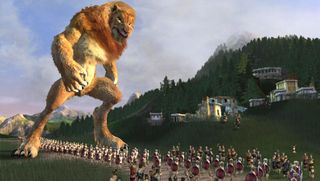
2000: Nintendo's no-show and a new Chief in town
As ever, Nintendo also enjoyed a decent show, putting out several top titles for scrutiny: Dinosaur Planet (which would become Star Fox Adventures), Conker's Bad Fur Day (previously attending as Conker's Quest and Twelve Tales: Conker 64), Banjo-Tooie, Mario Tennis and Pokemon Gold and Silver. Detracting from this potent line-up, however, was the disappointing no-show of Dolphin.
Elsewhere, while PC gamers were well served, it was easy to pick Black & White and Return to Castle Wolfenstein--which was being hailed as the best-looking first-person shooter on the planet--as the highlights. E3 2000 was also the year that Bungie showed off behind closed doors a previously obscure first-person shooter called Halo.
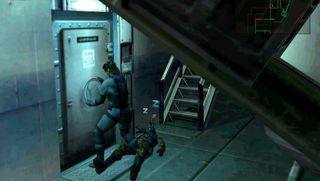
2000: A down year for PlayStation
Sony had a lackluster show and, after the impressive PS2 demos of the previous year, there were disquiet grumbles at the quality of games for the new console. Luckily for Sony, Solid Snake rode to the rescue with Metal Gear Solid 2: Sons of Liberty. It was--again--considered game of the show, despite the fact that it did--again--only appear in movie form. It looked so good that Metal Gear creator Hideo Kojima had to guarantee that he was showing "100% in-game footage".
It was depressingly apparent that the original PlayStation was going to be in dire shortage of new, decent titles and only Dino Crisis 2 and Final Fantasy IX gave cause to be excited about future gaming on the console that had not so long ago been overwhelmed with new and exciting games.
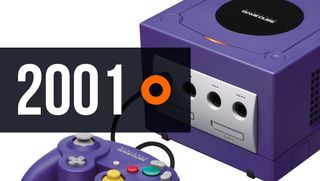
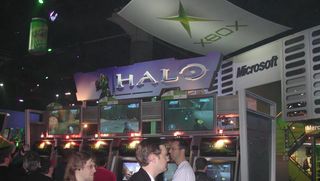
2001: Out with the old, in with the new
After the dismal performance of Dreamcast, Sega had already announced that it was dropping out of the console race and 2001 was the first E3 that it hadn't attended in the capacity of hardware maker. However, it did show up with some new multiplatform games, among them Super Monkey Ball (GameCube), Jet Set Radio Future (Xbox), and, still keen to feed its loyal fans, Sonic Adventure 2 (Dreamcast).
More than ready to try and fill the void left by Sega was Microsoft and its hulking great Xbox. After announcing console launch details at a special pre-show event, it descended on E3 in force, showing off more than 80 games. It also strengthened its list of Xbox exclusives by announcing that movie tie-in A.I., as well as Dead or Alive 3 and Dino Crisis 3 would be joining Halo and Munch's Oddysee on the roster.
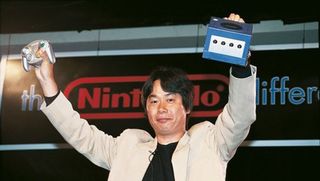
2001: The Nintendo difference
Nintendo was also busy hyping its new console - now called GameCube - and delighting gamers by revealing that it would cost $199 - a full $100 cheaper than Xbox. Head of product development Satoru Iwata told the audience at its pre-show conference that the success of GameCube would be down to the "Nintendo difference". This, he described, was four disciplines that made Nintendo special: innovation, quality, characters and heritage.
GameCube was playable for the first time - which was a good job as the only new N64 game was Tony Hawk's Pro Skater 2 - and the crowds were understandably eager to get their hands on one of the 11 titles on display. Among them were Star Wars Rogue Leader, Super Smash Bros. Melee, Pikmin, Luigi's Mansion and... one from Rare that would eventually become an Xbox 360 launch title, Kameo: Elements of Power. The GameCube impressed, but without Mario it just wasn't a party.
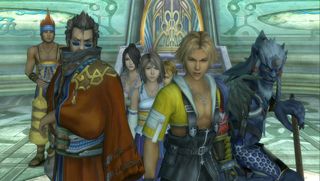
2001: A (Online) Space Odyssey
Sony, with its PS2 shifting along nicely, still managed to barge into the limelight by revealing its desire to take PS2 online. The Network Adaptor would allow the console to connect to broadband and phone lines, giving users access to the internet. Microsoft's Xbox honcho, J Allard, had this to say about Sony's plan: "We talked to the gamers and asked about surfing the web and downloading stuff. We also said, you can play F1 online and everyone can play a different car on the track. When they made a choice they went with the games."
A staggering 100 new PS2 games were revealed at the show and gamers were impressed by the likes of Stuntman, Final Fantasy X and Jak and Daxter. Support for the original PlayStation continued (65 new games were heading to the old dog). Although, in the shadow of its successor, the games were aging fast.
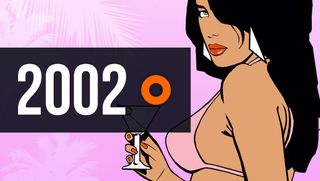
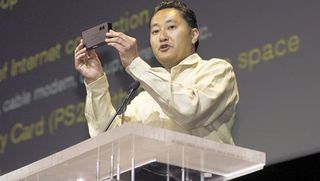
2002: Sony wins it all?
"The console war is over... PlayStation 2 has won." And with 30 million PS2 units sold compared to the four million for GameCube and Xbox it was difficult to argue with Sony America top dog Kaz Hirai's bold statement.
Besides bragging about its substantial lead over its competitors, Sony once again gave a concerted push to its Network Adaptor, promising that gamers would be able to surf the net and play PS2 online--with games like Tony Hawk's Pro Skater 4 and TimeSplitters 2--by the end of the year.
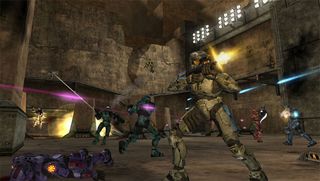
2002: The other consoles play catch-up
Microsoft also laid out its online plans by revealing its broadband-only Xbox Live service, which it stated would launch worldwide in autumn. Xbox boss J Allard believed the service would be "the world's biggest playground with the coolest rides." With games like Phantasy Star Online, Unreal Championship, and Halo 2 flagged as Live compatible, it certainly had appeal. And with Microsoft pledging to spend $2 billion on Xbox support and development over five years, it was apparent that the newest entry to the console race was in for the long haul.
While Sony and Microsoft were both obsessing with online, Nintendo was thrilling attendees with possibly its best line-up of games to date. Mario Sunshine (the first new Mario platformer in six years) and a new Legend of Zelda (later subtitled Wind Waker) were revealed, and Miyamoto was on hand to demo both games at Nintendo's pre-show conference. Rather comically, the legendary developer couldn't find a sword and was unable to complete the Zelda level he was playing. D'oh!
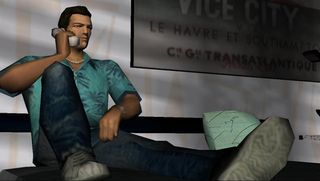
2002: Games, games, games
Each of the big three were promising large numbers of incoming games. Nintendo promised 100 GameCube titles for the US before the year's end. Microsoft revealed that there were an impressive 300 Xbox games in the pipeline, 200 of which would be out before Christmas. Sony already had 250 PS2 games in shops and predicted that a total of 475 titles would be available by the end of 2003.
Exclusives were also a prize commodity and the console movers each had their own secret weapons. In addition to new Mario and Zelda games, Nintendo paraded Metroid Prime, as well as a fine crop of GBA treats that included the e-Reader add-on and Zelda: A Link to the Past. Xbox rallied its troops with Blinx: The Time Sweeper, Ninja Gaiden and Project Ego (the early name for Fable). But it was Sony's bombshell that GTA: Vice City would be PS2 exclusive that really rocked the show.
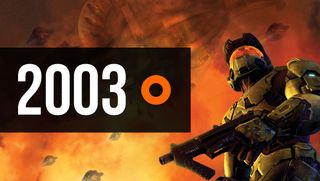
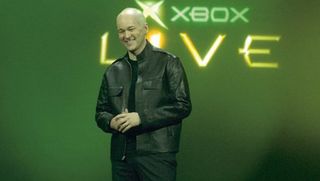
2003: Bill Gates' crew
Microsoft also had an impressive E3: Halo 2's screening sanctum required a dedicated two hour wait to gain access; it was revealed that PC shooter Doom 3 (which looked stunning at the previous E3) would also arrive on Xbox; and Rare's Conker: Live and Reloaded joined a wave of new games destined for Microsoft's machine. Even Snoop Dogg turned up to give 'props' to the Bill Gates crew. The only Xbox disappointment was the missing in action status of Perfect Dark Zero. A Rare rep assured enquiring types that they "might see it here next year".
PC games were particularly exciting, with Half-Life 2 standing out as game of the show and stunners such as Star Wars: Knights of the Old Republic, STALKER, Oblivion, Lost, and Doom 3 (despite only being shown as a trailer again) ensuring that personal computing created a great deal of positive hubbub.
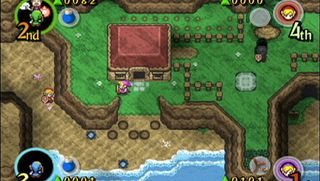
2003: The Big N comes up small
Too much focus on GameCube/GBA link-up, which was showed off with Zelda: Four Swords, and no blockbuster games to get the masses worked up meant that Nintendo had a pretty woeful show. In fact, it was only saved from being dreadful thanks to playable Mario Kart Double Dash and movies of Metal Gear Solid: Twin Snakes and Resident Evil 4.
Nintendo's big boss, Satoru Iwata, also casually revealed that the GameCube's successor was already in development and would be out before any next-gen machine from either Sony or Microsoft.
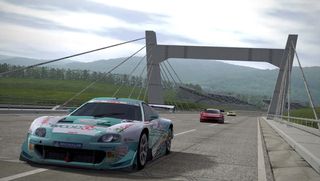
2003: GT4! Oh, and Sony's going portable
Nintendo's dominance of the handheld market faced a new challenge as Nokia announced launch details of its heftily priced ($299) mobile phone 'game deck', N-Gage. Oh, and Sony also revealed the existence of PlayStation Portable (PSP). It didn't show the handheld itself but did excite everybody by promising what it would be capable of. PlayStation big brain Ken Kutaragi hailed PSP as "the Walkman of the 21st Century". The PSP news dominated the show and even overshadowed the first public appearance of Gran Turismo 4. Still keen to big up its online strategy, Sony used GT4 to show off its Network Adaptor, but the whole process still seemed confusing compared to the up-and-running Xbox Live. By the time GT4 was released in 2005, the online mode has been removed.
As if PSP and GT4 weren't enough, Sony also confirmed that Metal Gear Solid 3: Snake Eater (which show-goers saw for the first time as a 12 minute movie) and the next GTA would be PS2 exclusive. A big EyeToy presence also ensured that the Sony stand was constantly buzzing.
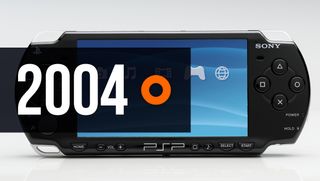
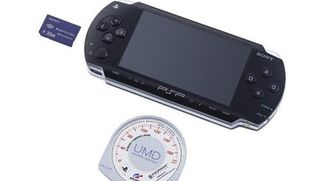
2004: Revelations and revolutions
After Nintendo confirmed that it had a new console in development at the previous E3, many people were anticipating PS3 and Xbox 2 announcements, but neither Sony or Microsoft were ready to oblige. Nintendo continued to tease, however, and revealed that its new console would be "revolutionary"...
Even without any next-gen revelations, E3 2004 was still an absolute smash. Sony finally unveiled its sexy-looking PSP and anyone that witnessed its awesome power was truly gobsmacked. The reigning king of the handheld empire, Nintendo, countered Sony's haymaker by revealing that the already-announced DS would have a touch screen. Opinion on the new portable devices was divided, although the PSP wow factor gave Sony's device the edge.
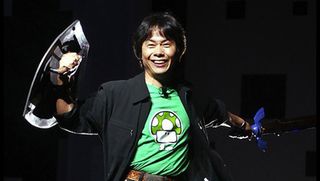
2004: Kicking ass, taking names, making games
The rest of the show was all about killer games. GameCube may have been losing the console war in terms of sales but with a new, grown-up Zelda adventure revealed (by a sword and shield brandishing Miyamoto), Metroid Prime 2, Star Fox, Advance Wars (later known as Battalion Wars), and a fresh E3 trailer of Resident Evil 4, the future looked bright for Nintendo's console. 2004 also marked the debut of Reggie Fils-Aime to Nintendo's camp, bringing a swagger and bravado that made him a natural for the E3 stage.
PS2's armoury was swollen with must-play titles like GTA: San Andreas, which caused a huge stir despite only a few screenshots proving the game's existence, Metal Gear Solid 3: Snake Eater, Gran Turismo 4, God of War and loads of EyeToy stuff (including Chat).
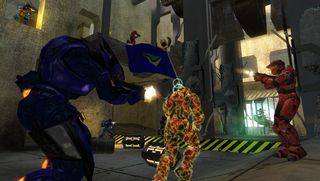
2004: Halo, Half-Life, and the dawn of a new World
Microsoft had nothing to announce on the same scale as PSP and Zelda, but it still put in a solid performance. It proudly revealed that Xbox had one million online users, unveiled its Live Arcade service, and announced that EA was finally supporting Live. All this was topped off nicely with playable Halo 2, which left anyone that sampled the online multiplayer in absolutely no doubt that Live would only go from strength to strength.
Sneaking in the side door was 'the next big thing' for PC, World of Warcraft, while Half-Life 2 promptly blew the socks off anyone that went within a 10 foot radius of it.
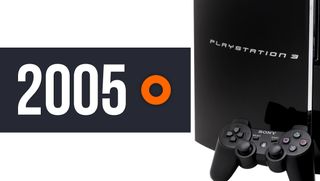
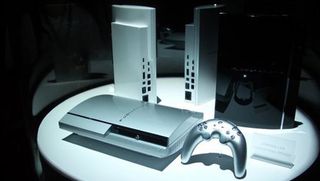
2005: Silver bullet
Without doubt, E3 2005 was dominated by the unveiling of PlayStation 3 at Sony's pre-show event. A wide-eyed audience was wowed by a series of tech demos and sneak previews from several titles currently in development for the PS2's successor. It remained a moot point throughout the week as to whether the footage witnessed was actually a true representation of in-game graphics the machine would be capable of producing, or whether they were just incredibly impressive pre-rendered movies. Only time would tell...
Microsoft's sleeves were comparatively empty, having revealed Xbox 360 on MTV the week before E3 while releasing a steady trickle of 'leaked' info from the Ourcolony.net viral marketing site. Various Microsoft representatives, including J Allard and Robbie Bach, repeated several times throughout the event that their machine would be "the most powerful next-generation console", although they offered no corroborating evidence.
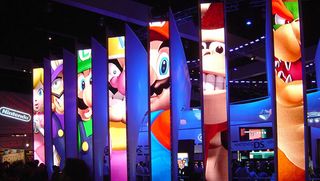
2005: Nintendo's alternate strategy
And then came Nintendo--who had absolutely no interest in making the most powerful next-gen console--and despite revealing its GameCube successor Revolution and a new handheld, Game Boy Micro, its conference was a real damp squib with no indication of its latest console's motion-sensing magic.
On the show floor, Microsoft was the only company with a significant next-gen presence, with an abundance of 360 trailers, demos, and even some playable code, albeit running at less than half power on Apple G5s rather than final hardware. Both PS3 and Revolution were also in attendance, although a lengthy line had to be endured to reach Sony's console. Even worse, Nintendo's next-gen machine could only be admired by an exclusive few.
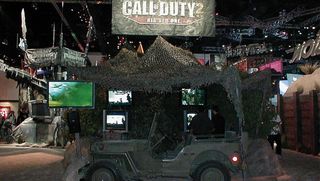
2005: Shooters and sequels and Spore, oh my!
In terms of games, the show was dominated by first-person shooters, most of which were of an amazingly high quality. Prey, FEAR, Unreal Tournament 2007, Quake 4, and Black all looked awesome--fans of shooting men in the face had plenty to look forward to.
The power of the sequel was as strong ever: every booth featured at least one follow-up game. And while some people grumbled about a lack of fresh content, there were some fantastic-looking sequels on show, such as Zelda: Twilight Princess, Killzone 2, Prince of Persia: The Two Thrones, Call of Duty 2, and Elder Scrolls IV: Oblivion. In terms of original software, Will Wright's Spore, Ninety-Nine Nights, and Okami all put in an appearance to critical acclaim.

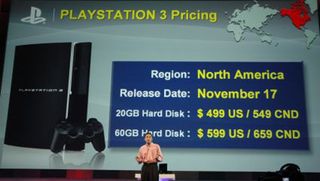
2006: Stumbling giant
Attendees at Sony's pre-show event were expecting the PlayStation giant to back up last year's big talk with some hard proof that the PS3 would be the must-have next-gen console. Despite the unveiling of PS3's motion sensing controller and the chance to play PS3 for the first time, the audience left feeling massively disappointed.
A few fresh faces were on display to help salvage what would otherwise have been a disastrous show for Sony. Assassin's Creed, Heavenly Sword, and Resistance: Fall of Man showed a reassuring amount of PS3 promise. PS2 was the only current-gen console with any significant presence and boasted a pretty decent line-up to boot, with PS2 exclusives God of War II and Guitar Hero II shining particularly bright.
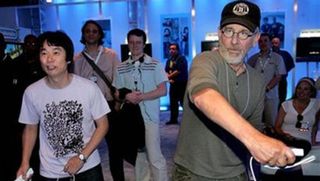
2006: Wii would like to play
In stark contrast to Sony's snore-inducing performance, Nintendo jump started enthusiasm with a rousing show that gave the world its first look at a whole wash of Wii (the new name for Revolution) games, among them a new outing for Mario and a Wii-specific version of The Legend of Zelda: Twilight Princess.
Wii was definitely the show's major attraction (or is that curiosity?) and anyone wanting to go hands-on with Nintendo's new console had to endure a four hour wait. A total of 27 playable Wii titles were on display, including Super Mario Galaxy, Metroid Prime 3: Corruption, WarioWare: Smooth Moves, The Legend of Zelda: Twilight Princess and Sonic Wild Fire. A Super Smash Bros. Brawl trailer featuring Metal Gear's Solid Snake also delighted the crowds.
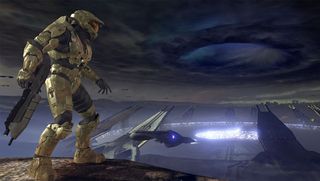
2006: New consoles? No problem, says Microsoft
Microsoft used its pre-show gathering to make two huge announcements. The existence of Halo 3 was finally unveiled with a tantalizing trailer, while the fourth instalment to the GTA series was also confirmed for Xbox 360 day and date with PS3. Microsoft boasted a generous helping of attractive exclusives, with Xbox 360 titles Gears of War, Blue Dragon, and Mass Effect all making a big impression.
Xbox 360 had a greater presence on the show floor thanks to it being the console used to demo the majority of multi-platform next-gen titles. Army of Two, Brothers in Arms: Hell's Highway, and Indiana Jones were all also shown on Microsoft's machine. But while the show was dominated by shiny new consoles, PC gamers basked in the glory of some incredibly mouth-watering fruits, like Crysis, Command & Conquer 3, Battlefield 2142 and Enemy Territory: Quake Wars.
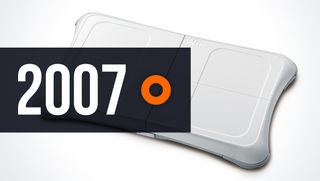
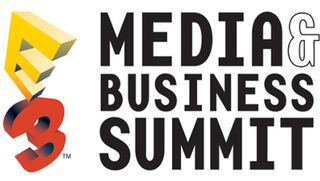
2007: Drastic downsizing
After E3 2006, rumors flew that the show would be no more, that the industry's biggest spectacle was cancelled forever. Fortunately, those rumors were a bit skewed, as the ESA clarified their plans: the event would be downsized, the number of attendees would be limited, and for the first time since 1997, the Los Angeles Convention Center would not host the Super Bowl of Gaming. Instead, the Barker Hanger in Santa Monica, coupled with the surrounding hotels, would be the home of the newly-named E3 Media and Business Summit.
Essentially, this moved turned the Super Bowl of Gaming into a glorified halftime show. Industry reaction was scathing, as evidenced by SimCity creator Will Wright calling the event "the walking dead." Sure, there were still games to be played and announcements to be made, but the entire experience just seemed off.
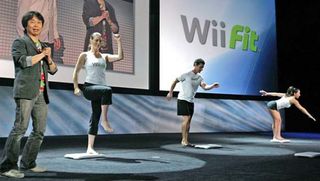
2007: Nintendo's body is ready
Nintendo continued to ride the Wii momentum into E3 2007, showcasing a full catalog of brand new AAA experiences for its Wii console. Games like Super Mario Galaxy, Mario Kart Wii, and Super Smash Bros. Brawl all saw some screen time at Nintendo's pre-show event. Things were looking bright enough for Nintendo's little system that could, but The Big N wasn't done yet.
Enter Wii Fit, a first-of-its-kind exercise game utilizing the Wii motion controls and a brand new peripheral, the Wii Balance Board. Using the weight sensitivity of the Balance Board coupled with the motion controls of the Wii Remote was unorthodox, and show goers were a bit confused, but it didn't take long after release for the Wii Balance Board to take the gaming world by storm.
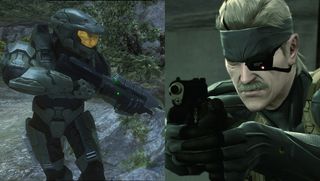
2007: Going through the motions
Outside of the Wii Fit bombshell, E3 2007 was rather bereft of major industry announcements. Both Microsoft and Sony played things safe, revealing a few new games but nothing that stopped the industry in its tracks. Microsoft only highlighted the next calendar year of releases, giving time to Rock Band, Lost Odyssey, Mass Effect and Halo 3. Microsoft did announce a DLC exclusivity deal with Rockstar for Grand Theft Auto IV, but did not show any footage or give any details.
Sony, coming off of the disastrous E3 2006 presentation, packed a little more punch into its offerings, highlighting games like Metal Gear Solid 4: Guns of the Patriots, Killzone 2, the first reveal of Infamous, and Media Molecule's new IP called LittleBigPlanet. The PlayStation Network figured prominently in Sony's plans, both through an extensive library of downloadable titles and the new PlayStation Home social feature. While in retrospect both Microsoft and Sony sported some big-time titles, the reaction at the time was tempered at best.
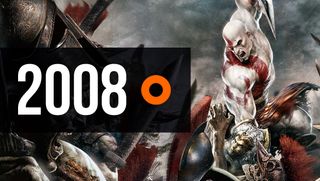
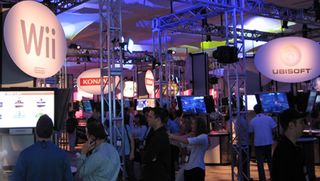
2008: Another down(sized) year
Apparently the negative reaction to the first E3 Media and Business Summit didn't register with the ESA, as they saw fit to do it again. While moving back to the Los Angeles Convention Center was a step in the right direction, using only one of the LACC's two halls and making all of the booths the same size and shape seemed to sterilize the entire experience. Once again, this wasn't the same E3.
One major difference from the previous year was an expanded list of games across all companies and genres. E3 2008 played host to Street Fighter IV, Dead Space, Resident Evil 5, Rock Band 2, Far Cry 2, Left 4 Dead, Mirror's Edge, and a few surprises like Fat Princess, Flower, and Braid. The show might have been the smallest in E3 history (5000 attendees), but that hall was packed to the rafters with games.
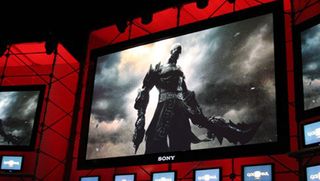
2008: Microsoft and Sony butt heads
By this time, the Wii was distancing itself even further from the other two major systems, so the air of competition seemed to center around "PS3 vs Xbox 360." E3 2008 didn't disappoint on that front, as both companies came out with guns blazing. Sony showed off Resistance 2, Killzone 2, Infamous, and turned the usually boring financial report into an excellent LittleBigPlanet demo. Sony ended their show with a tease of God of War III, signaling Kratos' debut on the PS3.
Microsoft put all of its weight into the New Xbox Experience, a brand new interface replacing the "blades" with a new window-based system more pleasing to the eye. Their pre-show game lineup included Gears of War 2 (chainsaw-toting Cliff Bleszinski in tow), Fable II, Fallout 3, and Banjo-Kazooie: Nuts and Bolts, the first game for the bear/bird duo since the Nintendo 64. Microsoft ended with a tease of their own, shocking the world with the Xbox debut of Final Fantasy in Final Fantasy XIII. Both presentations packed a little more meat than the previous year, but the specter of E3s past still loomed.
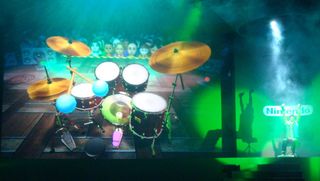
2008: Nintendo plays a sour note
Nintendo's E3 2008 presentation ranks with Sony's E3 2006 as one of the top E3 disasters of all time. Gone was the "Regginator" of E3 2004, replaced with Reggie and Cammie Dunaway talking about being "all about smiles" and repeating that line ad nauseum throughout. This conference served as the launching point for the "Nintendo has forgotten the core fans" criticism that still dogs the company to this day.
Granted, some of the games they showcased were impressive, including Grand Theft Auto: Chinatown Wars on the DS, Animal Crossing: City Folk bundled a Wii Speak device for chatting online with friends (finally), and Wii Sports Resort, the sequel to the pack-in game with every Wii console sold. After those, Nintendo gave us Wii Music which, well...utter the name "Ravi Drums" to any Nintendo fan and he or she is sure to cringe and fall into the fetal position. Unfortunately for Nintendo, E3 2008 was widely considered a total failure.
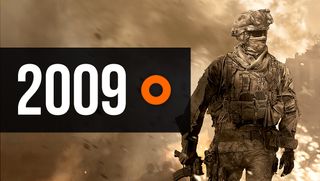
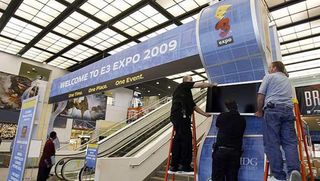
2009: A return to form
The E3 Media and Business Summit has left the building. The true E3, the Electronic Entertainment Expo, came back with a vengeance in 2009, bringing with it the spectacle and atmosphere that had been lost in those two years of downsizing dismay. Once again, E3 signified the "big time" for the gaming industry, and all of the major players were ready to return to glory.
The Los Angeles Convention Center was once again filled with extravagant booths, televisions, and portable gaming devices from pillar to post, and the sights and sounds of the gaming industry. 2009 reminded the world what E3 is all about, and luckily for all of us, the event has yet to forget.
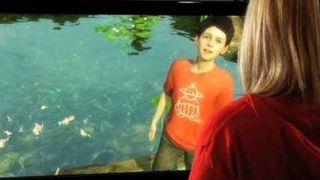
2009: Get up and move
For the Big Three, E3 2009 meant one thing: motion controls. Nintendo was ahead of the game with their Wii console, but that didn't stop them from showing off the Wii MotionPlus technology that would be packaged with Wii Sports Resort, allowing 1:1 precision in Wii gameplay. Sony unveiled their own motion-sensing controller, baring a few similarities to Nintendo's device while depending more on "wand" technology through the PlayStation Eye.
The biggest motion shock belonged to Microsoft, who introduced the world to Project Natal: a motion-sensing, voice-recognizing camera that allowed for playing games without the use of any controller at all. Steven Spielberg announced his plans to develop for it, and Peter Molyneux's Milo demo, where a player had a full conversation with a digital boy, showcased just how impressive the technology could be.
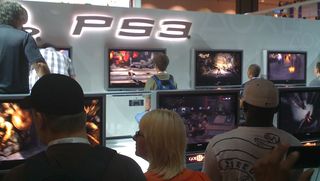
2009: Don't forget the games
Motion control may have dominated the headlines, but the number of games making an appearance or a debut at E3 2009 is nothing to scoff at. Big-time exclusives first shown included Nintendo/Team Ninja collaboration Metroid: Other M, New Super Mario Bros Wii, Golden Sun DS, Metal Gear Solid: Peace Walker, Left 4 Dead 2, Uncharted 2: Among Thieves, Heavy Rain, MAG, Crackdown 2, Mario and Luigi: Bowser's Inside Story, Alan Wake, Scribblenauts, ModNation Racers, and the Last Guardian. All of those names, and we haven't even touched the multiplatform games.
Call of Duty: Modern Warfare 2 led the third-party charge, but Assassin's Creed II, The Beatles Rock Band, Metal Gear Solid: Rising, Mass Effect 2, Bayonetta, Homefront, and Splinter Cell: Conviction also impressed. Oh, and Sony also announced a digital-only complement to the PSP called the PSP Go, but it's best not to think about that any more than you have to.
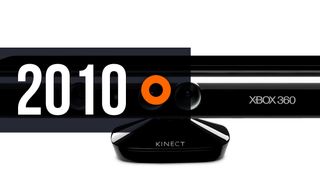
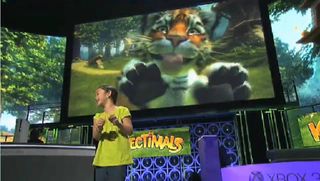
2010: Microsoft encourages gamers to Kinect
Microsoft kicked off E3 2010 by introducing the world to Kinect, the re-named Project Natal that made playing games a full body (and no controller) experience. Games like Dance Central, Kinectimals, Your Shape: Fitness Evolved, and Kinect Star Wars showed off the impressive tech. This wasn't the only tech-related news the House of Xbox would reveal, as the new Xbox Slim with faster hardware and new wireless technology closed their show.
Unfortunately, this was also the first major conference where Microsoft came off as "entertainment-first" rather than "gaming-first." Sure, Call of Duty: Black Ops, Halo: Reach, Gears of War 3, and Fable III were all impressive demos, but far too much time was spent on Kinect, its menu navigation tools, and ESPN to keep gamers' interest.
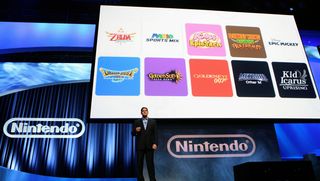
2010: Nintendo goes glasses-free
Nintendo was a wild card leading up to E3 2010. Rumors swirled of a new DS to be unveiled, but no one really knew what to expect once Reggie, Miyamoto, Iwata et al took the stage to show off their latest wares. We did indeed see a new portable system in the Nintendo 3DS, and the glasses-free technology did impress all who tried it, but the rest of the conference was simply remarkable.
The Legend of Zelda: Skyward Sword, Mario Sports Mix, Wii Party, Golden Sun: Dark Dawn, a revamped GoldenEye, Kirby's Epic Yarn, Donkey Kong Country Returns, the 3DS, Kid Icarus: Uprising, Nintendogs + Cats, and a slew of partnerships for 3DS games all made their debut in the hour-and-a-half showcase, with Epic Mickey, Metroid: Other M, Just Dance 2, and Dragon Quest IX also being shown. The show was total sensory overload, game after game after game without hesitation. This was the Nintendo the gaming industry had been missing, back in all its glory.
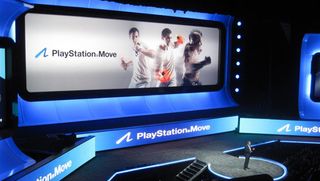
2010: Sony makes its Move
Sony wanted to make a big splash at E3 2010, and they knew that PlayStation Move, their new motion controller, wasn't going to do it. Instead, they called upon an old friend in David Jaffe, who debuted a brand new Twisted Metal, and former enemy Gabe Newell, who debuted new footage of Portal 2. Jaffe was a nice touch, but the previously-outspoken Newell taking Sony's stage threw every attendee through a loop.
Sony didn't stop there either, debuting Infamous 2, a vast library of PSP games like Invizimals and God of War: Ghost of Sparta, LittleBigPlanet 2, and PlayStation Plus, their answer to Xbox Live. While at the time PS Plus sounded vastly inferior, now it's a must-have for any PS3 player with its free games and major discounts. Great things have to start somewhere, after all.
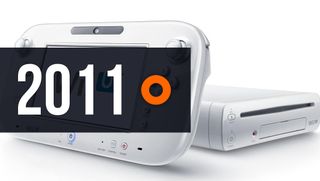
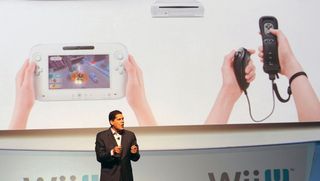
2011: The start of a new generation
Even though all three systems saw continued success, Nintendo realized that the Wii's life cycle was coming to a close. It was time to unveil the next Nintendo masterpiece, a brand new console for a new age of gaming...and while the Wii U was an unique piece of tech, the industry couldn't help but feel underwhelmed. Pretty demos of 1080p HD Zelda and a bird in a Japanese garden are great, but the reveal left a lot to be desired.
The 3DS portion of Nintendo's show, however, laid the foundation for a strong lineup of 3DS games. Star Fox 64 3D, Super Mario 3D Land, Kid Icarus: Uprising, and the brand new Luigi's Mansion 2 all were a ray of sunshine through the clouds of uncertainty surrounding the next Nintendo console. Unfortunately, those games couldn't completely hide the truth: Wii U was a big question mark.
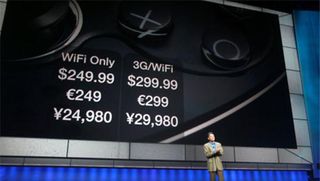
2011: Vita breathes new life into portable gaming
Fresh off of the doomsday-scenario PSN outage, Sony needed to get back into the good graces of their fans. After a heartfelt apology from Jack Tretton, Sony went on the offensive with a solid lineup of games. Uncharted 3, Resistance 3, BioShock Infinite, Sly 4, Starhawk, and a NBA 2K12 Move demo featuring Kobe Bryant impressed, while Dust 514's interconnected relationship with EVE Online blew attendees away.
The main event, however, was the Next-Generation Portable, or NGP, which was officially named the PlayStation Vita. Priced at $249 to start and sporting features like dual touch-pads, an OLED screen, and dual cameras, the Vita made quite the first impression. Coupled with demos for games like Ruin, Street Fighter X Tekken, Uncharted: Golden Abyss, and Ruin, the Vita seemed to be in the driver's seat.
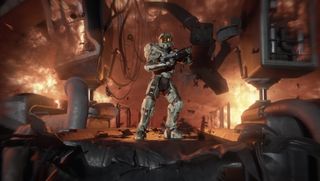
2011: Xbox brings games on parade
Microsoft apparently liked Nintendo's approach in 2010, as the 2011 Microsoft press conference was ripe with new titles from both first- and third-party sources. Call of Duty: Modern Warfare 3 started the madness, and it was followed by Tomb Raider, Madden 13, FIFA 13, Mass Effect 3, Ghost Recon: Future Soldier, Gears of War 3, Ryse, Halo: Anniversary Collection, Forza 4, and a slew of Kinect titles. The last-second tease of Halo 4 sent shockwaves through the gaming world, ushering in a new trilogy of games for the Master Chief.
The entertainment-centric focus of 2010's show wasn't ignored, as a demonstration of Bing on Xbox, as well as announcements of partnerships with the UFC and YouTube covered the entertainment side of things. Thankfully they didn't take up too much time, allowing Microsoft to spoil us with new game reveals.
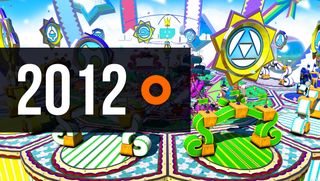
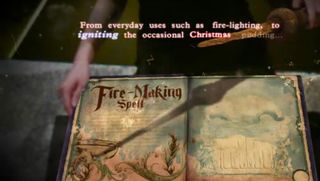
2012: Wonderbook, what is the secret of your power?
We try to applaud when a game company tries something new. We like fresh ideas; we enjoy innovation. Wonderbook, unveiled by Sony at their E3 2012 pre-show, isn't what we're talking about. Essentially a tool for enhanced reading, the debut demo was glitchy, unresponsive, and downright boring. We don't want to fall asleep at your briefings, we want to be amazed!
Luckily, the Wonderbook announcement was bookended by a strong lineup of games, including the debut of Quantic Dream's next game Beyond: Two Souls, PlayStation All-Stars Battle Royale, God of War: Ascension, Assassin's Creed III, Far Cry 3, and The Last of Us. Anything that helped us to forget about Wonderbook was well appreciated. Seriously, how can you mention how excited J.K. Rowling is to be involved, then not bring J.K. Rowling out on stage, instead proving a wall of J.K. Rowling's words? Unacceptable.
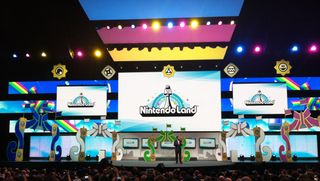
2012: The Big N takes us to Nintendo Land
After the subpar debut of their new system the year before, Nintendo decided to re-debut the Wii U, complete with a full library of games. Pikmin 3, Lego City Undercover, Scribblenauts Unlimited, Batman: Arkham City Armored Edition, ZombiU, and New Super Mario Bros. U all looked like must-haves for the new system...and then Nintendo Land made its way to the stage. Look, we get it: Nintendo Land was the pack-in game with the Wii U a la Wii Sports, and Nintendo had to tell the world about it...but why was it the very last part of the "re-launch?" Where was Zelda? Smash Brothers? Mario Kart?
Not to be outdone, the 3DS received its own mini-conferences separate from the Wii U re-reveal, where Luigi's Mansion: Dark Moon, Castlevania: Lords of Shadow - Mirror of Fate, Epic Mickey: Power of Illusion, Kingdom Hearts: Dream Drop Distance, and Paper Mario: Sticker Star were all showcased. Both systems had plenty of games to try, but just like the year prior, the re-reveal seemed a bit underwhelming. Wii U lacked a killer app, and everyone knew it.
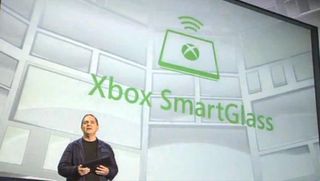
2012: Microsoft Ushers in Xbox SmartGlass
It's not a stretch to consider that most gamers complement their video games consoles with smartphones, tablets, etc. Microsoft gets it, and with their Xbox SmartGlass technology they want us to use all of our technology harmoniously, as one major experience. While the idea of checking my tablet for more information about the show I'm watching while I'm watching it is interesting, this technology is better served for a show like CES, not a place like E3 where we are expecting fresh looks at new games.
There were games at Microsoft's conference, to be sure. Halo 4, Call of Duty: Black Ops 2, South Park: The Stick of Truth, Resident Evil 6, Madden NFL 2013, FIFA 2013, Forza Horizon, and Tomb Raider all had stage time, but after the way-too-long SmartGlass presentation, our interest was lost. Not even Usher and his concert/Dance Central 3 unveil could bring us back.
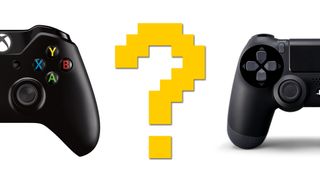
CHARGE!!!!
Now that we've traveled through the annals of E3 history, it's time to look ahead. The doors to E3 2013 will be opening very soon, and all we can think about is what it will hold for us. This year will see two new consoles, a whole mess of new games, and more to talk about than we can wrap our heads around.
We'll be knee-deep in the trenches of E3 2013 covering every inch of the show floor, but if you need more now, check out 15 things we wants to see in Mirror's Edge 2 and Xbox One vs PS4 - which one looks best (so far)?


